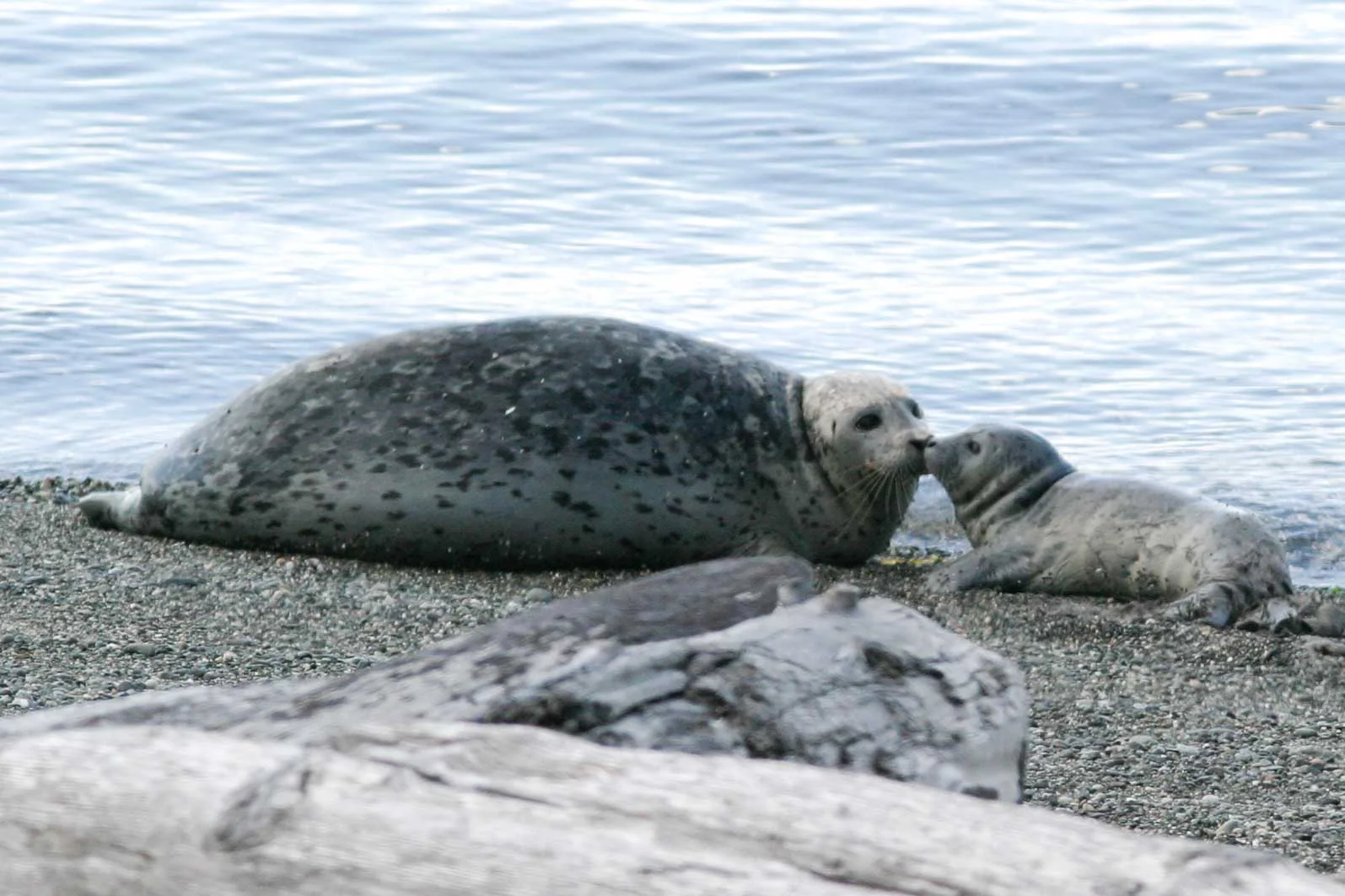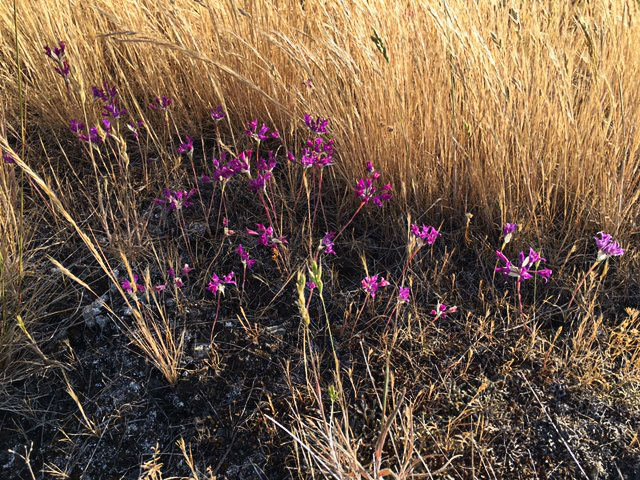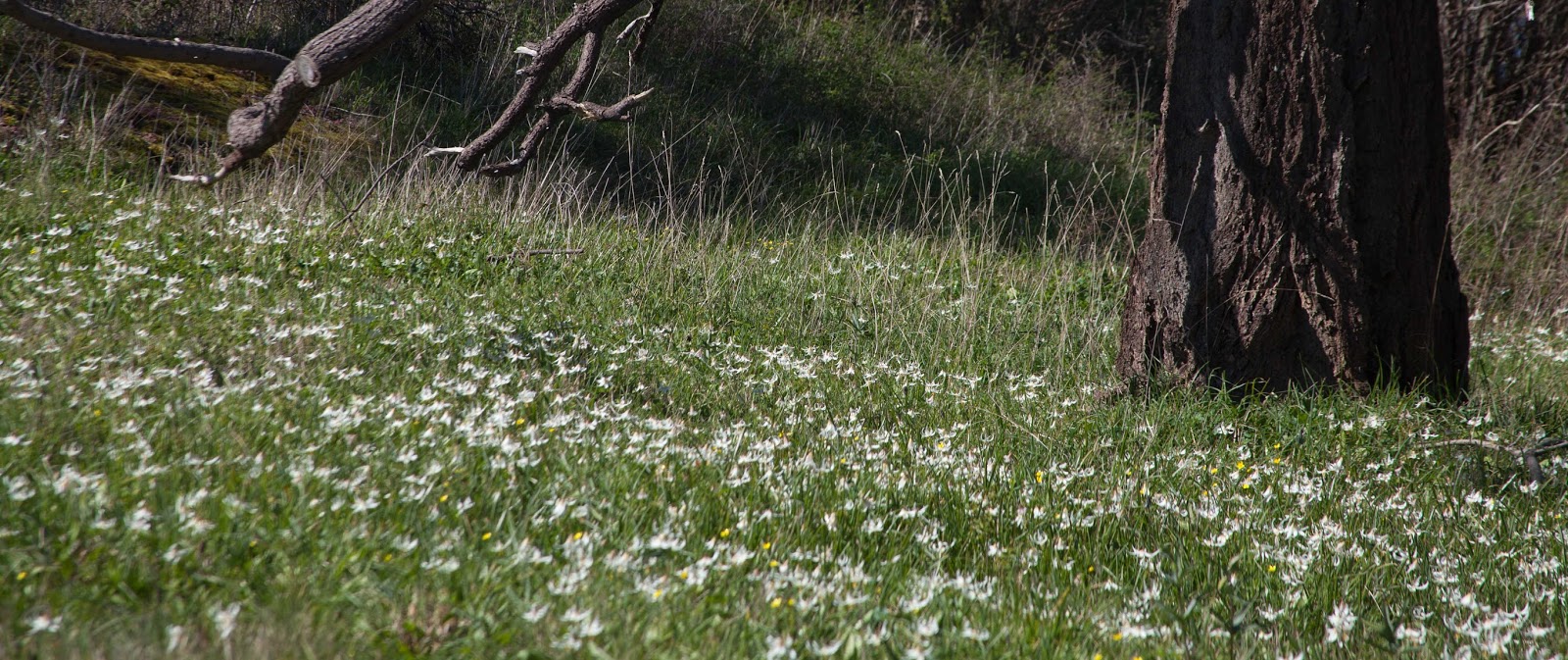By Phil Green, Yellow Island Steward
Fall is when our stewardship team kicks into high gear with monitoring our preserves. This is because every year, we must ensure that our conservation easements and management plans are being properly enforced according to our own standard-operating procedures and to the rules of the Land Trust Alliance, of which we are a member. The Nature Conservancy owns four islands in the San Juan Islands: Goose, Deadman, Sentinel and Yellow islands. Unlike Yellow Island, the other three islands are minimally managed, leaving nature to work their magic. How are these three islands doing now?
Goose Island
It was a beautiful, flat, calm day on the water in September when I visited Goose and Deadman Island to do the yearly monitoring. Goose Island is a rookery for both pelagic and double-crested cormorants. It also has a beach on the north end where harbor seals like to haul themselves out, and I counted at least 75 basking in the sun as I arrived on the island.
During the visit, I observed more than 150 cormorants despite it being well past nesting season. Some double-crested cormorants were even sitting on their high-rise stick nests. The pelagic cormorants, on the other hand, nest on the cliff face with almost no discernible nests. Even after nesting season, they seem to like perching on a narrow ledge as opposed to a nice piece of flat ground.
Glaucous-winged gulls also nest on Goose Island. Some years, there are up to 300 nesting pairs. This was another good year for the gulls — although no official nest count was done. There were still a few flightless chicks, probably the result of a second attempt at nesting after the first attempt failed.
There was one bird species that was conspicuously absent: black oystercatchers, which also supposedly nest on the island. At one time, the state Department of Fish and Wildlife recorded four oystercatcher nests in a single survey on Goose, a record for a three-acre island. However, we did not see any oystercatchers this visit, nor were any spotted earlier this year. I’m not sure if this is just a timing issue or if they are no longer there.
Deadman Island
Going directly across the San Juan Channel, we went to Deadman Island. Nearby is Deadman Reef, which is part of the San Juan Islands National Wildlife Refuge and a favored seal haul out; I counted around 25 when I visited. However, the area is so rocky, I would never take a boat between Deadman Island and Deadman Reef.
Deadman Island doesn’t attract the wildlife like Goose Island does. Some years it has up to two pairs of nesting oystercatchers, though I didn’t see any here, either. Birds I did see included Heermann’s, glaucous-winged and California gulls and a turkey vulture that did a flyover.
Sentinel Island
Sentinel Island is located at the northwest end of Spieden Channel northwest of Yellow Island. At 14 acres, it is the largest of the San Juan Preserves.
Sentinel was purchased at the same time as Yellow — 1980 — because it had a pair of nesting bald eagles. In 1980, bald eagles were just starting their recovery thanks to being a species listed under the Endangered Species Act. In Washington, the numbers had dropped to six nesting pairs. Today there are anywhere from 90 to 120 nesting pairs in the San Juan Islands alone, including the Sentinel Island pair. This is a clear example that the Endangered Species Act does work.
During this year’s monitoring, I never saw the eagles, but could clearly hear them calling back and forth to each other. Other species seen this year included a pair of turkey vultures flying over, a northern flicker active on the east side, and approximately 50 mew gulls floating on the northwest side. Harbor seals were hauled out along the south side, about 25 total, plus another group of 25 on the southeast corner.
Though we don’t actively manage Sentinel Island, we made one exception in 2007. What was a wide open meadow on the south side was being invaded by Douglas firs. This is a natural process — so not surprising. Ecologists at the time thought that the firs would rapidly take over the meadow. This turned out to not be the case. All the young trees appeared to be from the same cohort year.
Girdling involves stripping the bark around the circumference of a tree's trunk or branch. Typically, when the trunk of a tree is girdled, the entire tree will die as its pathway for transporting water and nutrients is cut off.
Because native prairies are a vanishing ecosystem type, it was decided that, if in the future, we wanted to restore the meadow, we could buy some time by girdling the trees that were invading. In theory, this should have killed the Douglas firs, temporarily stopping the natural succession to a Douglas fir forest and returning it to a prairie ecosystem. All trees in the south meadow were girdled with mixed results. Looking at the following three photos it can be seen that many young firs were in fact killed, yet patches still survive. From that famous line from Jurassic Park: “Nature will find a way.” It is still unclear to me how so many trees survived the girdling.
This last photo shows a new generation of Douglas firs on the right side of the photo surrounding a dead fir. Given the small size of the Sentinel meadow, my current recommendation would be to let natural succession take place. Sentinel would eventually be like many other San Juan islands — a Douglas fir dominated forest.
Yellow Island is open to the public! Learn more here.
While we are currently focused on landscape-scale preservation, these small islands show that “landscape scale” is relative. Eagles need isolated areas to nest, harbor seals need areas away from humans to haul out and give birth and nurse their next generation and oystercatchers need undisturbed islands to nest on with intact rocky intertidal areas to forage. On these small islands with no human presence, black oystercatchers are a keystone species of intertidal.
Though we may be used to thinking of landscapes as large swathes of connected land, the San Juan Islands show the importance of thinking of island clusters as connected.



























